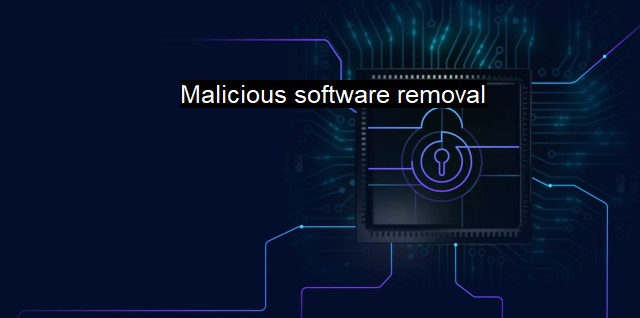What is Malicious software removal?
Protecting Your Digital World: The Importance of Malware & Virus Removal Software
Malicious Software Removal, often popularly known as Malware removal, is a cybersecurity practice aimed at detecting, isolating and cleaning potentially harmful software from a user's system. This type of software usually carries damaging or annoying effects. Malware can be anything ranging from viruses, Trojans, Spyware, Adware, Worms, or Ransomware. They can severely compromise the speed, performance, and safety of an individual or an organization's computational resources if not detected and cleaned in a timely manner.Malicious software removal is not a single action. In fact, it is a sequential procedure that begins with malware detection. This is usually conducted by an antivirus or any other secondary security program. The valid algorithms in these tools actively monitor and scrutinize every bit of data entering through servers, email or website downloads. Once the algorithm tags a particular software chunk as potential malware, it issues an alarm to deter the user, or forcibly end the download if required. This examination procedure is ceaseless and covers every file, program, or application functioning on a system against a periodic update of worldwide malicious software collection.
The second phase involves isolation of the spotted threat. This is of utmost importance as any delay or futile sedation might allow the malware to replicate or further harm the system. The antivirus program cuts all communication lines between the malware marked software and rest of the operational tools, which restricts its mobility and damage control abilities.
Once cut off from the main system environment, malicious software removal progresses to the cleaning phase. This can mean one of two courses of action depending on whether the infected object is a valuable user data file or just residual data waste.
If it is junk, it can simply be deleted along with the underpinning malware. instances where user data are infected pose serious challenges and erasure is usually not an option. Hence, specifically designed cleansing processes within the antivirus program are utilized to separate the malicious element and subsequently remove them from the user data file.
Complete removal of the intruding object, data recovery, and system security largely depend on the sleuthing abilities of the antivirus program and how promptly the procedure was initiated. Cybersecurity principles always recommend system users regularly update their antivirus system, amongst other security measures, as outdated defense mechanisms might prove insufficient before ever-evolving malware. Immediately after detection, malware removal should ideally begin to prevent any potential residual damage.
Malicious software removal is thus a preemptive strategy that prevents unwarranted and often surreptitious cyber-attacks from significantly destructing the health, speed, and safety of a system or network. Besides having a proficient antivirus tool, users are also advised to avoid doubtful system actions such as downloading unverified software, mindlessly clicking on web pop-ups, or visiting flag-listed websites amongst other risky online behavior. A multifaceted defense strategy that combines updated antivirus tools, initiation of regular system scans, keen online behavior, and swift removal of any detected malware would thus offer a more comprehensive defense against malicious software intrusion.
Malicious software removal forms a crucial line of defense in today's digital world. As cyber threats evolve and adapt, it becomes increasingly critical for both individuals and organizations to employ robust and field-tested cybersecurity tools, along with practices like Malware removal to safeguard their systems from potential exploits and control consequential damages.

Malicious software removal FAQs
What is malicious software removal?
Malicious software removal is the process of detecting and deleting harmful software from your device. This software includes viruses, trojans, spyware, and other types of malware that can infect your device and compromise your security.Why is it important to have a malicious software removal tool?
Having a malicious software removal tool is essential for protecting your device from cyber threats. Malware can steal your personal information, damage your files, and even control your device remotely. A removal tool can help detect and delete the malware before it causes any harm.What are the signs of a malware infection?
Some signs of a malware infection include a slower operating system, pop-up ads, unexplained changes in files or settings, frequent crashes, and unauthorized access to your accounts or data. If you notice any of these signs, you should run a malware scan as soon as possible.How can I prevent malware infections in the future?
To prevent malware infections, you should keep your device and software up to date, use a reputable antivirus program, avoid clicking on suspicious links or downloading unknown files, and be cautious of phishing scams. It is also important to be mindful of the websites you visit and the permissions you grant to apps and software.| | A | | | B | | | C | | | D | | | E | | | F | | | G | | | H | | | I | | | J | | | K | | | L | | | M | |
| | N | | | O | | | P | | | Q | | | R | | | S | | | T | | | U | | | V | | | W | | | X | | | Y | | | Z | |
| | 1 | | | 2 | | | 3 | | | 4 | | | 7 | | | 8 | | |||||||